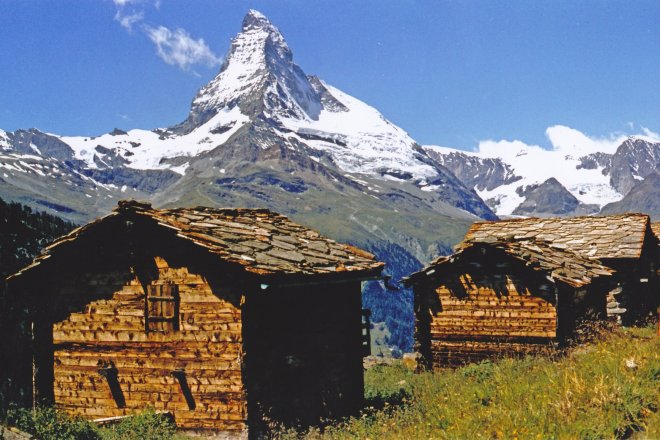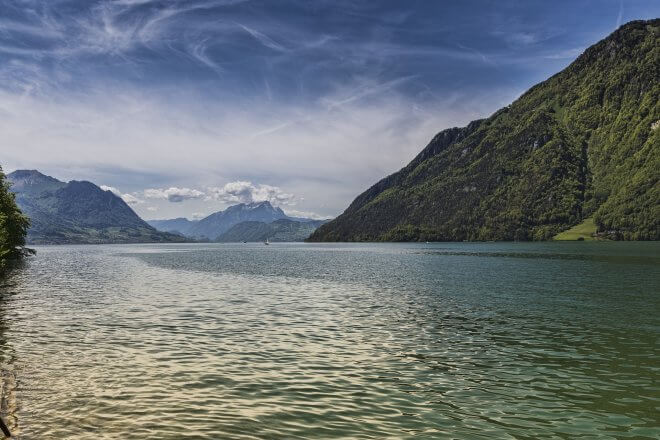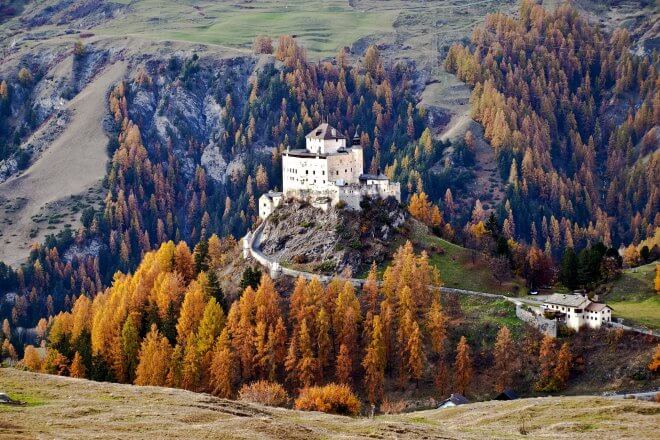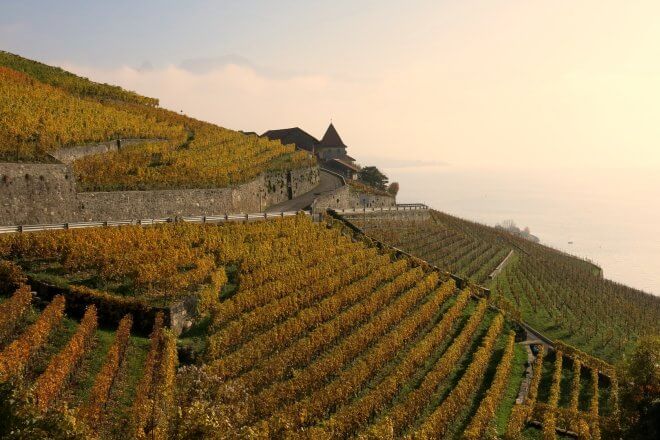Alternative Travel Index Rank: #8
Switzerland is also in the Top 10 Most Underrated & Eco Destinations
Excels in level of peace, transport efficiency, and electricity supply
Population and tourists density at peak season: 215 (high)
Switzerland is a peaceful, prosperous, and stable modern market economy with low unemployment, a highly skilled workforce, and a per capita GDP larger than that of the big Western European economies. It is known for its mountains (the Alps and Jura) but it also has a central plateau of rolling hills and plains and over a hundred extensive lakes. The highest point is Dufourspitze at 4.634 mt., while Lake Maggiore is only 195 mt. above sea level. The climate is temperate and continental, with cold, rainy/snowy winters and cool, humid summers.
Travel Costs
Switzerland ranks last for price competitiveness in Justraveling’s Alternative Travel Index. Average travel costs per day: $112 (backpacker) – $402 (mid-range). Cheapest Swiss cities: Basel, Lausanne. Most expensive: Zug, Zurich.
Best Time to Go
Apr-Jun and Sep are the best time to go to Switzerland, to get better deals and enjoy warm temperatures. Late December to early April is high season in the most popular ski resort areas, that can be packed, especially during weekends.
Places to Visit
Lavaux is a terraced wine-growing region that stretches for about thirty km along the south-facing northern shores of Lake Geneva. Various hiking trails pass through the vineyards, offering a good alternative to wine tasting.
Bellinzona is the capital of the canton Ticino and is famous for its three castles, that are UNESCO World Heritage sites since 2000, and for its carnival named Rabadan. The town lies east of the Ticino river, at the foot of the Alps.
Far less popular and well-known than its upper counterpart, Lower Engadine is a hidden alpine paradise. The geological background of the Lower Inn Valley forms a distinctive landscape marked by jagged flanks and high-lying terraces, where most of the villages are located. Its cuisine is quite original and varied.
Lake Lucerne borders on the 3 original Swiss cantons, as well as the canton of Lucerne. The lake, surrounded by five stunning peaks, has a complex shape, with several sharp bends and 4 arms, and can be circumnavigated by train and road.
Zermatt is a car-free village in the upper Valais. It’s probably best known as a platform for skiing and mountaineering, especially on the 4,478 m high peak that towers above the village, the legendary Matterhorn (aka Cervino).
The Aletsch Glacier is the largest glacier in the Alps, covering approx. 82 sq km in the Swiss canton of Valais. The whole area is part of the Jungfrau-Aletsch Protected Area, which was declared a UNESCO World Heritage site in 2001.
Travel Ideas and Things to Do
The Sbrinz Route takes you to the historic tracks connecting Lucerne to Domodossola, passing through the Grimsel and Gries passes. The route once was traveled by mule transporters (someggiatori) for trade in goods and assets, and especially for Sbrinz Swiss cheese, from which it draws its name.
The Sphinx Observatory on the Top of Europe (Jungfrau) is the highest-altitude construction in the entire continent, but can be easily reached by train. Besides science, the research station also offers striking views of the snowy Alps.
The Walker’s Haute Route is the “lightweight” version of one of the world’s classic hikes from Chamonix in France to Zermatt in Switzerland. The trail stays below 3,000 meters and takes up to 16 days of walking, surrounded by an Alpine scenery of unparalleled beauty. While challenging, it’s safe and non-technical.
Switzerland has one of the best railway systems in the world. It includes very scenic trains, such as the Glacier Express and the Gornergrat Cogwheel Railway, that are an excellent way to enjoy the alpine panorama in the most relaxed way.
Open to people of any age and gender, the Bergwaldprojekt workcamp is a great way to support the restoration and protection of the forest ecosystem at various sites in Switzerland. Lodging, meals, and guidance are free of charge.
More active travel ideas for your next trip can be found in the Hiking Series. Check out these five routes to enjoy an awesome day hike in Switzerland.
This Travel Guide is a work in progress. Improve it with a Swiss touch!
- Browse All European Destinations
- World’s Best Alternative Travel Destinations
- Trip Planning: Inspiration, Budget, Flights, Accommodations, Tools
Sources: some text excerpts from Wikitravel & Wikipedia; travel cost data from Numbeo.




